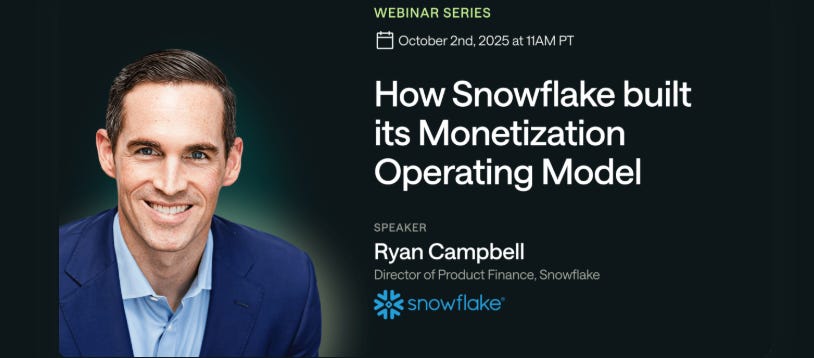The rising consumer to enterprise AI playbook
Inside Fyxer’s path from $1 to $17 million in 8 months

Snowflake is my go-to case study for how to scale with usage-based pricing. They’ve innovated on everything from how they handle sales comp in a consumption model to how they support customers (spoiler: no Customer Success team!) to how they’ve gotten Wall Street comfortable with a consumption business model. I caught Ryan Campbell share the story at Metronome’s Monetize 2025 conference and am confident you’ll want to hear it, too. Save your spot for Ryan’s webinar with Metronome on October 2nd.
Consumer software has long felt, well, unexciting. Churn rates are through the roof. ARPU potential is de minimis. Few apps have staying power.
But AI is ushering in what a16z now calls The Great Expansion. Breakout consumer AI companies are reaching $100M ARR in less than two years and ARPU potential can be an order of magnitude higher than pre-AI. The old consumer model was built for churn; the new models have a more sophisticated pricing architecture and big expansion potential from B2C to enterprise.
It reminds me of the early days of product-led growth (PLG), now re-engineered for the AI era where flashy demos go viral, everyday people use ChatGPT as a therapist, and social media algorithms fuel the flames. And as we saw in the PLG 1.0 era, the long-term winners eventually build a bridge from consumer to enterprise adoption. This creates the ultimate arbitrage: the speed of consumer demand meets the stickiness of large corporates.
Fyxer, which brings a Cursor-like experience to email, is following the consumer to enterprise AI playbook with surprising success. They’re betting they can save email and give busy professionals an hour back each day. The company grew to $1M ARR in 2024. Then they exploded from $1 to $17M ARR in only eight (!) months. (Fyxer also recently closed a $30M Series B led by Madrona; that was only six months after a Series A led by 20VC.)
I caught up with co-founder Archie Hollingsworth to unpack Fyxer’s unlikely AI growth journey. And I put that story in the context of what’s becoming an emerging playbook for consumer to enterprise AI expansion. Here’s the playbook, in five steps.
Step 1: Make the product dead simple for everyday people.
Step 2: Turn to influencers to get initial traction.
Step 3: Go big with consumer performance marketing.
Step 4: Refine GTM around business users and enterprise expansion.
Step 5: Continuously improve AI and reactivate users along the way.
👋 Hi, it’s Kyle Poyar and welcome to Growth Unhinged, my weekly newsletter exploring the hidden playbooks behind the fastest-growing startups.
Step 1: Make the product dead simple for everyday people.
Fyxer has an unlikely founding story. Brothers Archie and Richard originally built a services business, FYXER People. It was a tech-enabled virtual executive assistant and they bootstrapped the business to $5M ARR (and profitable) from 2016-2022.
It took Archie and Richard more than six years and three failed products before they were ready to go big with what’s now Fyxer AI, an email assistant with built-in meeting scheduling and note taking. Their agency had worked with a wide range of customers, mostly folks outside of tech, and Fyxer was intentionally designed to be dead simple for everyday people.
It would not sound like AI. It would work out of the box, no customization required. And marketing would target anyone who lives in their inbox, even if they don’t pay for any other software or AI tools.
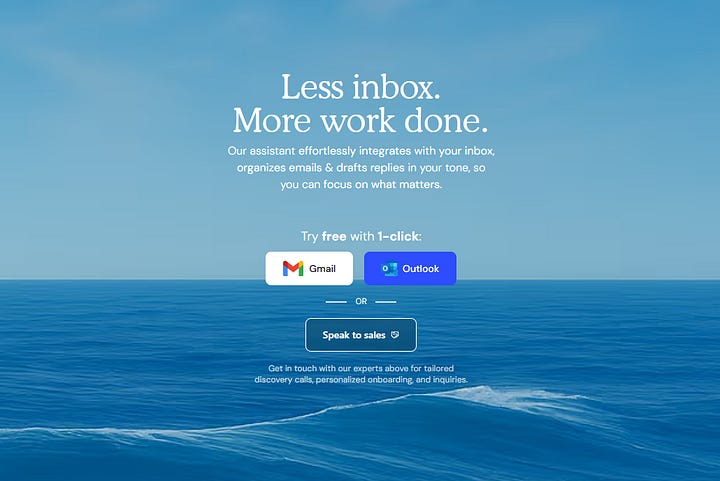
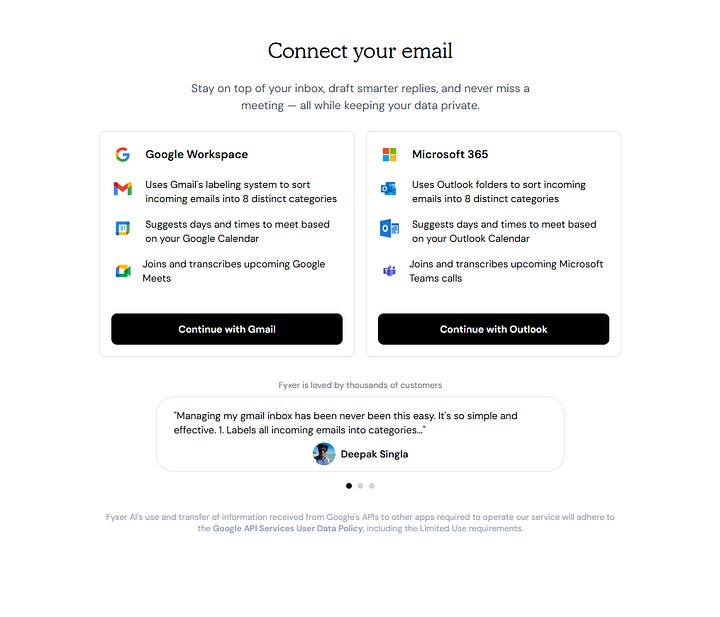
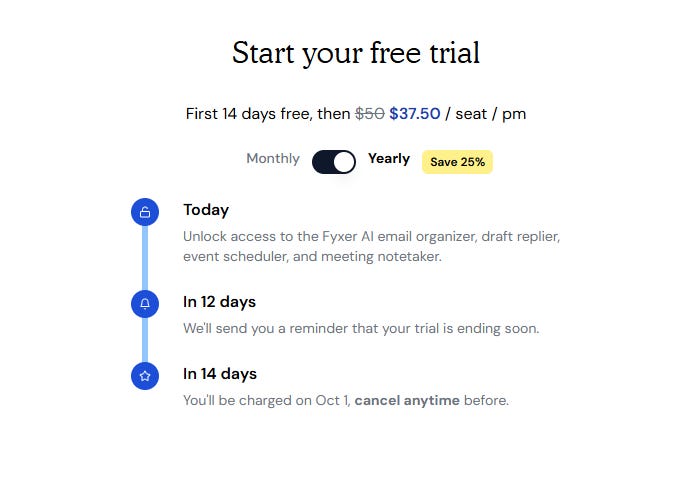
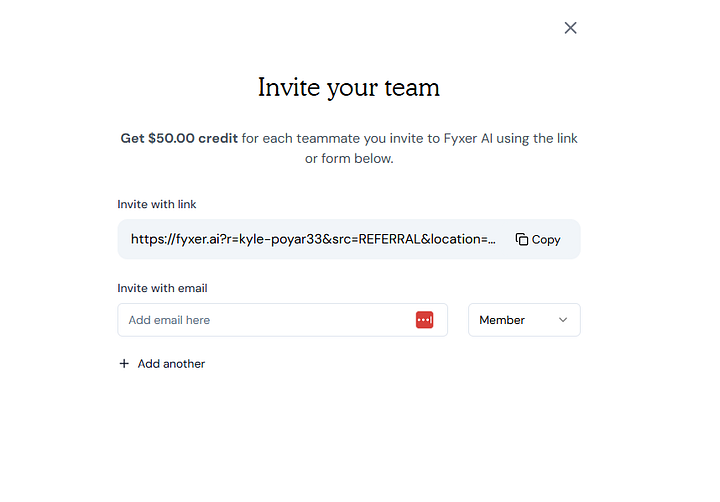
The product onboarding is pretty slick. I especially liked the constant reinforcement of Fyxer’s value proposition; the user testimonial on the second onboarding screen was a great touch.
Fyxer, like many other AI companies, requires a credit card to unlock the free trial. That felt reasonable given the product category; if I’m going to trust an AI tool with something as sensitive as my email, I should be OK to put down my credit card info. I was also defaulted to a trial of the Pro plan, but given the option to downgrade later.
Something else you might notice: Fyxer is aggressive about inviting your team. Not only is the team invitation in the onboarding flow, Fyxer offers a $50 credit for each teammate you invite to Fyxer. While I rarely see such a bold team invitation push, I have confidence that this has been rigorously tested by the team. Fyxer has four Growth Engineers (10% of the company) and each Growth Engineer runs 1-2 experiments per day around improvements to onboarding, referral programs, and the dashboard itself.
I was impressed by Fyxer’s out-of-the-box presets. The setup process feels almost non-existent; once you’ve integrated your calendar, Fyxer is essentially ready to go. There are no complicated shortcuts. But you can easily adapt it to your preferences by toggling a slider or adding a few extra sentences to the style prompt.
Learning: When in doubt, recommend a preset and let users adjust it later.



